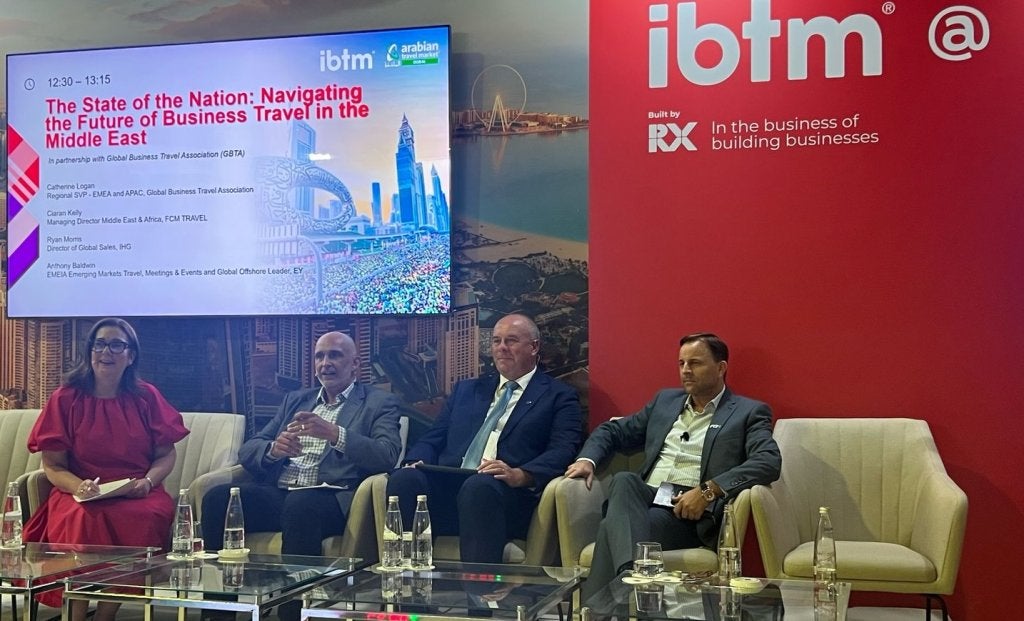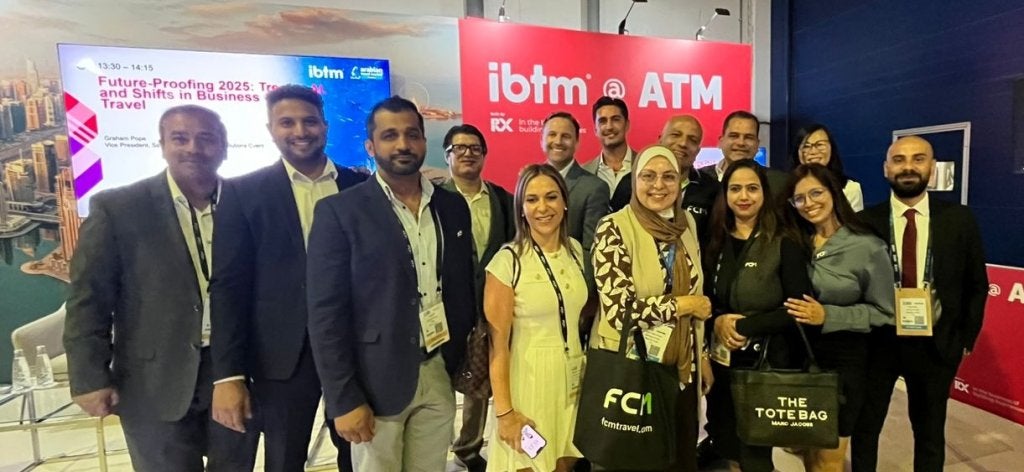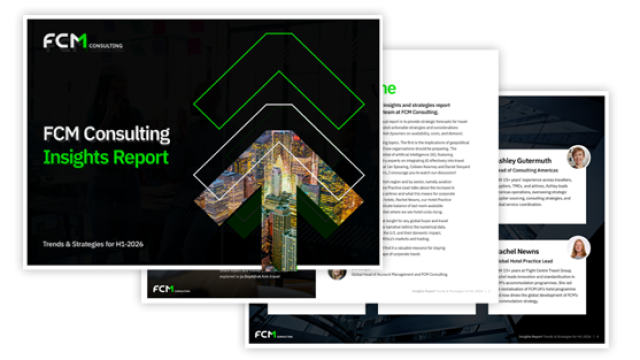Arabian Travel Market: Key takeaways
Arabian Travel Market: Key takeaways
Every year Arabian Travel Market becomes a buzzing hub for the Middle Eastern travel industry and among those conversations is IBTM@ATM, a space dedicated to the business events sector.
This year, our very own Ciarán Kelly, Managing Director of Middle East & Africa joined Catherine Logan, Regional Senior Vice President EMEA & APAC at the Global Business Travel Association (GBTA) to discuss trends and the significant forces affecting the Middle Eastern business travel market.
Here are key things we learnt from the engaging session, focused largely on statistics and trends from the 2024 GBTA Business Travel Index Outlook Report
1. Middle East business travel is predicted to grow 6%
The Middle East region has grown more than any other post-COVID, with business travel spend increasing 10% in 2024. While that has dipped to 6% for 2025, the region’s chunk of the global travel spend pie continues to increase.
GBTA’s forecasts for 2025 indicate:
Best performing markets: Kuwait, Qatar, and Saudi Arabia
“A lot of the growth is due to the public and private projects taking place in the region and booking multiple trips in advance has become a regular trend for our customers. With increasing demand and limited hotel infrastructure in some areas at this stage, early planning is now essential to secure flights, accommodations, and even ground transport during peak periods.” said Ciarán Kelly, Managing Director of Middle East & Africa, FCM Travel.

2. Annual spend is hitting US$3bn
Saudi Arabia is thought to have already surpassed the $3bn mark for yearly spend on corporate travel. As one of the fastest-growing markets, the country’s spend is expected to grow a further 11% in 2025.
The United Arab Emirates is anticipated to reach the $3bn milestone by 2027, with Qatar and Kuwait closing in as volumes increase. Israel remains one of the largest countries for business travel, but growth has been hampered by geopolitical conflicts.
The emergence of these destinations becoming business hubs is driving up the cost of hotels. In FCM Consulting’s analysis of 2024 travel trends, the travel consultants found the average room rate across the Middle East & Africa region sat at $207. When you compare the last quarter of 2024 vs 2023, the average rate paid has increased by 19%.
“Hotel occupancy across the region is the highest globally, around 78% mark. This is putting a lot of pressure on hotels, nonetheless there is also a lot of new hotels opening and many more in construction mode. Generally, though, everything is positive,” added Ciarán.
3. Globally, GBTA is optimistic
There’s no doubt the travel industry has stabilised since COVID days, with spend forecast to reach US$2 trillion in 2028.
It could further accelerate if there is economic stability and even growth in core markets. Technology advancements could also see that projection change. However, there are many factors that could hinder that movement. These include inflation, China’s slower recovery, political tension, and significant natural disasters.
“In general, the argument for business travel in 2025 is strong, but transformational change will continue to influence how we travel for work around the world,” said Catherine Logan, Regional Senior Vice President EMEA and APAC, Global Business Travel Association (GBTA). “These include economic stability, budget factors, how and where we work, implications of technology, the evolution of sustainability in business travel and the focus on the traveller.”

4. Half of businesses expect to spend more on travel in 2025
According to the GBTA outlook, easing travel costs and increasing traveller confidence are supporting the increase in business travel.
52% expect company travel spend to increase this year vs 2024, echoed by our own research which found 34% were expecting budgets to increase.
In the GBTA report, 53% of travel programme managers said there are more “linked” business trips, for example, employees visiting two locations or holding more than one large meeting in one trip. Trips are then naturally becoming longer, with 36% reporting longer durations.

